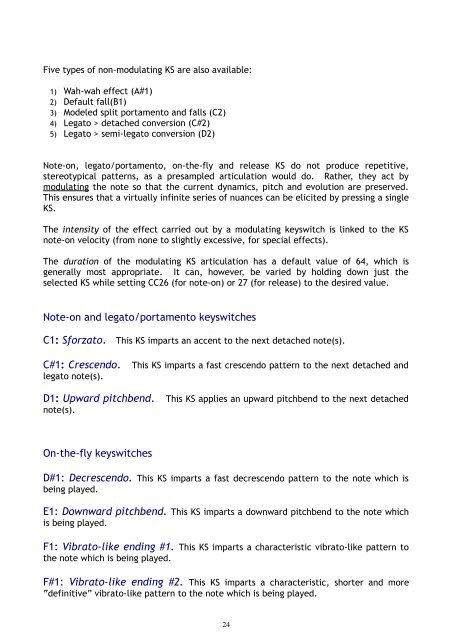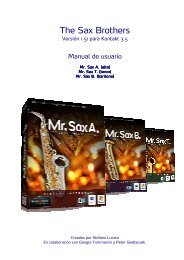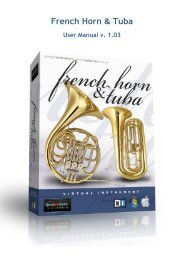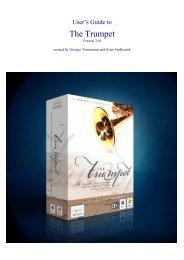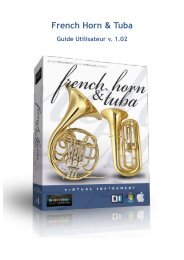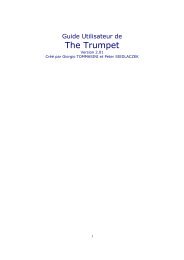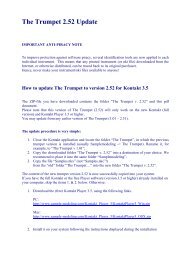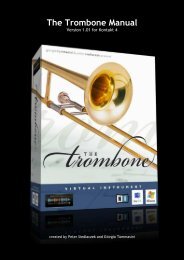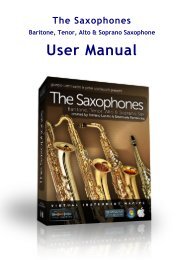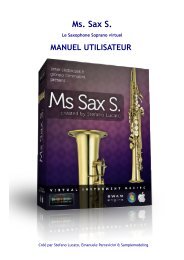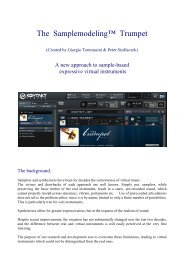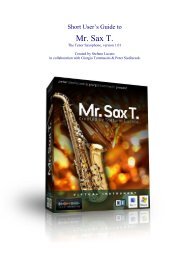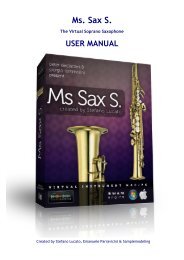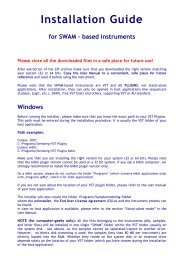The Trumpet - Sample Modeling
The Trumpet - Sample Modeling
The Trumpet - Sample Modeling
You also want an ePaper? Increase the reach of your titles
YUMPU automatically turns print PDFs into web optimized ePapers that Google loves.
Five types of non-modulating KS are also available:<br />
1) Wah-wah effect (A#1)<br />
2) Default fall(B1)<br />
3) Modeled split portamento and falls (C2)<br />
4) Legato > detached conversion (C#2)<br />
5) Legato > semi-legato conversion (D2)<br />
Note-on, legato/portamento, on-the-fly and release KS do not produce repetitive,<br />
stereotypical patterns, as a presampled articulation would do. Rather, they act by<br />
modulating the note so that the current dynamics, pitch and evolution are preserved.<br />
This ensures that a virtually infinite series of nuances can be elicited by pressing a single<br />
KS.<br />
<strong>The</strong> intensity of the effect carried out by a modulating keyswitch is linked to the KS<br />
note-on velocity (from none to slightly excessive, for special effects).<br />
<strong>The</strong> duration of the modulating KS articulation has a default value of 64, which is<br />
generally most appropriate. It can, however, be varied by holding down just the<br />
selected KS while setting CC26 (for note-on) or 27 (for release) to the desired value.<br />
Note-on and legato/portamento keyswitches<br />
C1: Sforzato. This KS imparts an accent to the next detached note(s).<br />
C#1: Crescendo. This KS imparts a fast crescendo pattern to the next detached and<br />
legato note(s).<br />
D1: Upward pitchbend. This KS applies an upward pitchbend to the next detached<br />
note(s).<br />
On-the-fly keyswitches<br />
D#1: Decrescendo. This KS imparts a fast decrescendo pattern to the note which is<br />
being played.<br />
E1: Downward pitchbend. This KS imparts a downward pitchbend to the note which<br />
is being played.<br />
F1: Vibrato-like ending #1. This KS imparts a characteristic vibrato-like pattern to<br />
the note which is being played.<br />
F#1: Vibrato-like ending #2. This KS imparts a characteristic, shorter and more<br />
“definitive” vibrato-like pattern to the note which is being played.<br />
24


